Richard the Lionheart – the crusader king
Richard I (more commonly known as Richard Cœur de Lion or Richard the Lionheart ) was a king of England who lived during the 12th century. He is arguably best-known for the role he played in the Third Crusade. Although Richard earned a reputation for being a formidable military commander and warrior (hence his epithet, ‘the Lionheart’), he may be said to have been less successful as a ruler.
In fact, Richard was so pre-occupied with the crusades that he abandoned his responsibilities as King of England. In his absence, England fell into the hands of his brother, John, who later became king himself. It was during John’s reign that the Angevin Empire disintegrated (hence his nickname ‘Lackland’). Nevertheless, Richard contributed in a way to its demise through the neglect of his duties as a monarch.
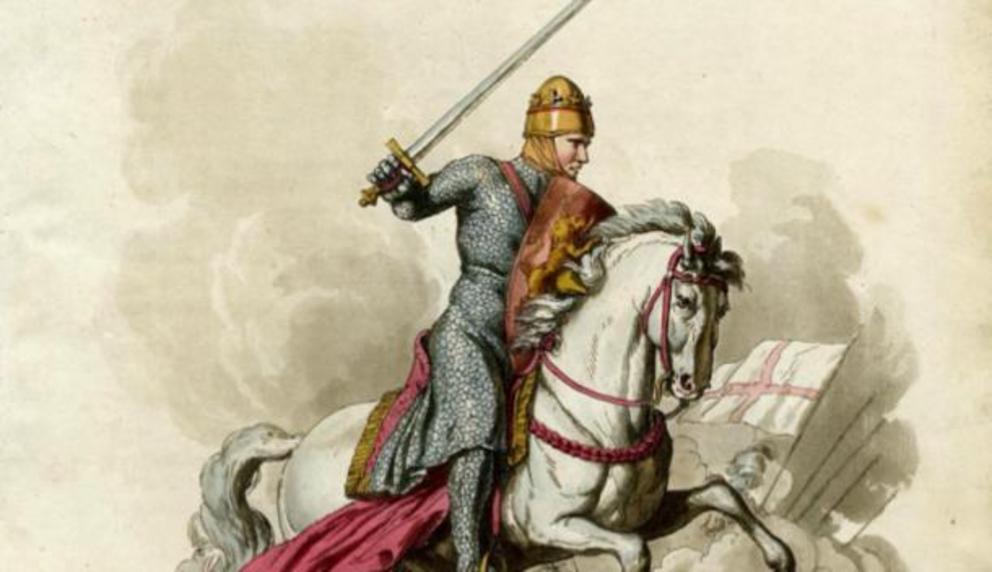 King Richard I the Lionheart.
King Richard I the Lionheart.
Richard I’s Early Life
Richard the Lionheart was born on the 8th of September 1157 in Oxford, England. His father was Henry II of England and his mother Eleanor of Aquitaine . Richard is recorded to have been born in ‘the King’s Houses’, a palace built by Henry I, his great-grandfather. This palace stood outside the north gate of Oxford city, not far from the present site of Worcester College.
Richard had two older brothers, William (who died at the age of three), and Henry (known by his epithet ‘the Young King’), as well as a younger brother, John. Although Richard spent his childhood in England, it is unclear if he ever learned to speak English. It is entirely possible that Richard never spoke English, considering that Anglo-Norman French was the language used by the elites.
Since Richard was not his father’s eldest son, he was not expected to become King of England. Besides, he had little interest in England. According to one story, Richard had remarked that he would have gladly sold the whole kingdom if he found an interested buyer. In any case, Richard’s interest was in the French territories that were held by his family.
After spending his childhood in England, Richard went to continental Europe, where he lived in the court of his mother at Poitiers. Richard was his mother’s favorite son and Eleanor hoped that he would inherit the Duchy of Aquitaine from her when the time came. Before reaching adulthood, Richard was already Duke of Aquitaine and Count of Poitiers and ruled these territories with his mother.
On the other hand, Richard had a more difficult relationship with his father. In 1173, encouraged by his mother, Richard joined his brothers in their rebellion against the king. Henry managed to put down his sons’ rebellion and had Eleanor imprisoned.
Richard and his brothers were forced to submit to their father and to seek forgiveness for their transgressions. Richard was reconciled with his father, but this was not to last.
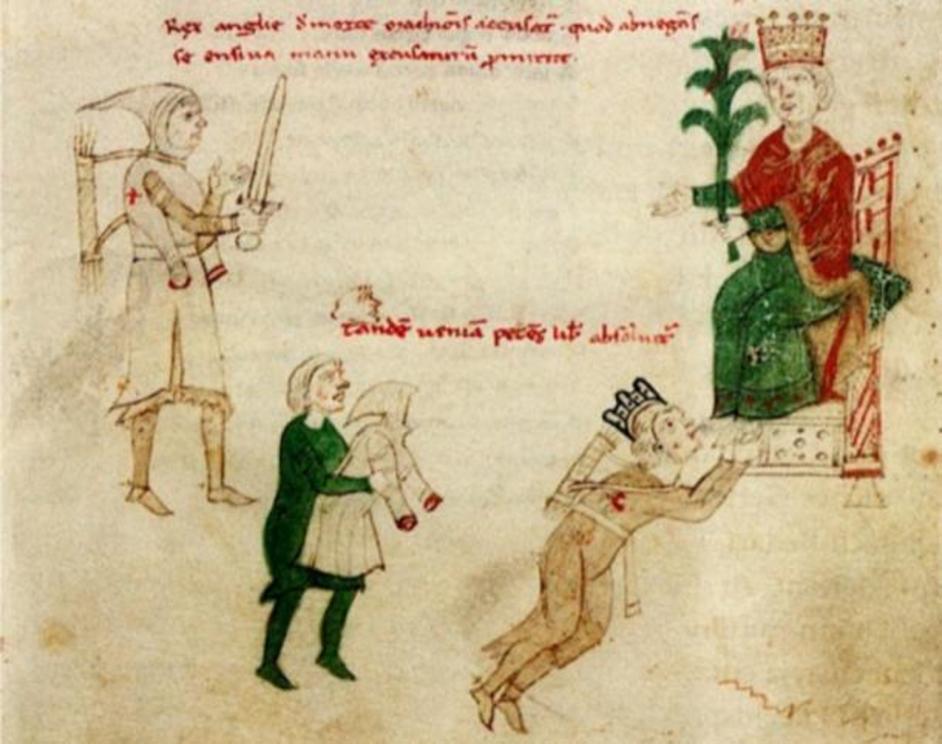 Richard the Lionheart being pardoned by Henry VI.
Richard the Lionheart being pardoned by Henry VI.
Richard the Lionheart Reluctantly Becomes Heir to the Throne
In 1183, Henry the Young King died, which meant that Richard was now the heir to the throne of England. As a consequence, Henry was hoping to give the Duchy of Aquitaine to his younger son, John. Richard refused to surrender the duchy to his brother and war broke out once again between father and son.
In his war against Henry, Richard appealed to the king of France, Philip II. In November 1188, Richard paid homage to the French king for his territories in France. In 1189, the two men joined forces against Henry, who was hounded to a premature death in the same year.
With Henry’s death, Richard was crowned King of England. In addition, he inherited the Duchy of Normandy and the County of Anjou as well. In spite of being king, Richard had no interest in ruling England at all. In 1187, news arrived from the east that Jerusalem had fallen to the Muslims under Saladin.
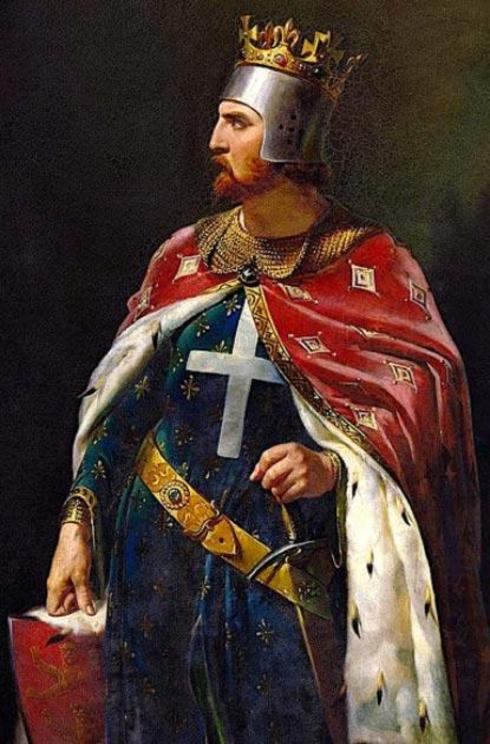 Richard I the Lionheart, becomes King of England.
Richard I the Lionheart, becomes King of England.
News of Jerusalem’s fall sent shockwaves throughout Europe, and the pope, Urban III, is said to have died of shock from hearing the news. A crusade to retake Jerusalem was preached throughout Europe, and many nobles took up the Cross, including Richard. Two years later, the new king of England had only one thing on his mind – to fulfil his vows by going on a crusade to reclaim Jerusalem for Christendom.
Richard the Lionheart Risks England to Fund the Crusades
Although Henry had taken up the Cross as well, troubles back home kept him from participating in the Crusade, and, as mentioned earlier, he died in 1189. Nevertheless, he made plans to go on a military expedition to the Holy Land and had levied a special tax, the ‘Saladin Tithe’, throughout his kingdom.
The funds raised by Henry naturally went to Richard. Still, this was not enough and the king dug deep into the royal treasury. Furthermore, Richard sold whatever he could to increase his funds – offices, castles, land, etc.
It may be from here that the story of Richard wanting to sell off England originated. In any case, less than a year after becoming king, Richard had enough funds to raise a formidable fleet and to equip an army for his expedition. Needless to say, with all his resources being poured into the crusade, Richard cared little about the financial future of his kingdom.
Apart from the funds he needed to raise, another obstacle faced in the way of Richard and his crusading dream was his old ally, Philip II. The French king had been eyeing some of Henry’s lands in France, which were now in the hands of Richard. As expected, Richard was not about to give up his lands without a fight and therefore increased the defenses of these areas, in case war broke out.
Fortunately, Philip had taken up the Cross as well, and war with Richard would also jeopardize his crusading plans. The two kings were able to reach some sort of agreement and departed for the Holy Land in July 1190. Before his departure, Richard appointed Hugh de Puiset, the Bishop of Durham, and William de Mandeville, the Earl of Essex, as regents to govern England during his absence. This decision greatly displeased his brother, John, who began to plot against Richard.
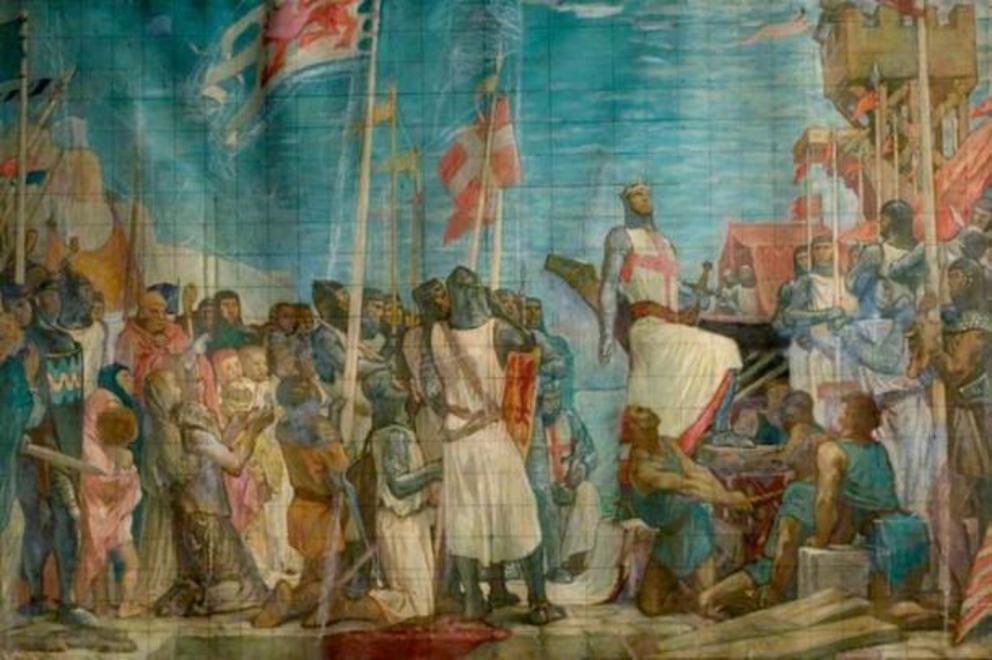 Richard the Lionheart Embarks on the Third Crusade.
Richard the Lionheart Embarks on the Third Crusade.
The crusaders landed on the island of Sicily in September 1190. Richard had planned to stop at Messina, a city in northeastern Sicily, as it was the ideal point of departure from Europe to the Holy Land. In addition, the king had some business to settle with Tancred, who had succeeded his cousin, William II, as King of Sicily. Among other things, Tancred withheld the inheritance that Joan, William’s widow, was due.
Moreover, Joan was imprisoned by Tancred. This greatly displeased Richard, as Joan was his favorite sister. Richard captured Messina in October and reached an agreement with Tancred. The deal between Richard and the Sicilians, however, made the English king more enemies than friends.
This agreement included an alliance between Richard and Tancred against the latter’s rival, Henry VI, the new king of Germany (who became the Holy Roman Emperor in the following year). Needless to say, the Germans were angered by this. This alliance also strained Richard’s relationship with Philip, as the latter was on Henry’s side.
Matters between Richard and Philip went from bad to worse with the arrival of Richard’s mother, Eleanor, with her son’s bride. Since the age of 9, Richard was betrothed to Alys, a daughter of the French king Louis VII, and one of Philip’s sisters. Although Richard’s father had promised Louis that Alys would marry his son when she came of age, the promise was never fulfilled.
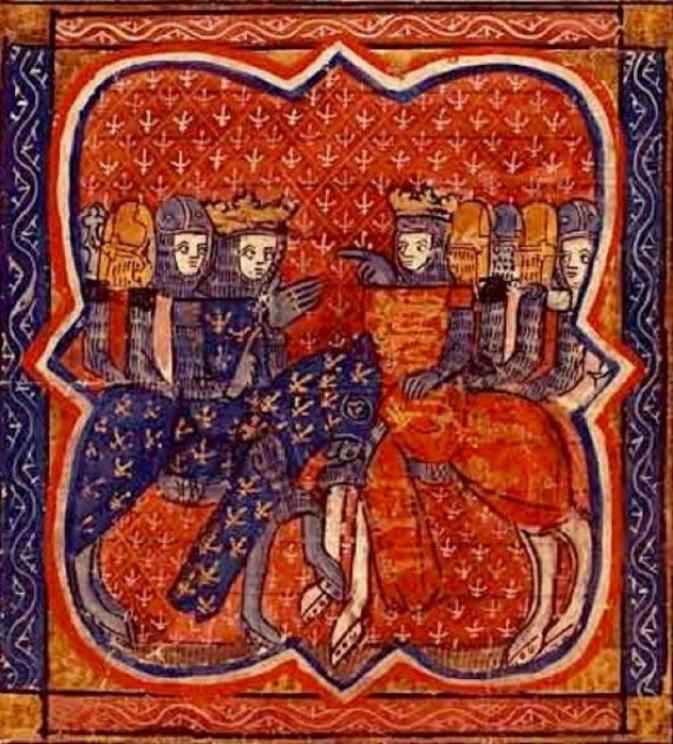 Richard the Lionheart and Philip of France.
Richard the Lionheart and Philip of France.
In the meantime, Alys was kept as a prisoner in England for 25 years, and there were rumors that Henry had been using her as his mistress. When Eleanor arrived in Sicily, it was not with Alys, but another woman, Berengaria of Navarre. This would have certainly been an insult to Philip, but the French king was in no position to do anything about it, and therefore could only quietly lick his wounds, for the time being.
In April 1191, the crusaders left Sicily, and continued their journey to the Holy Land. Not long after leaving Messina, the fleet ran into a storm and about 25 ships went missing. Three of them were shipwrecked on the island of Cyprus and were plundered by the Cypriots, while the survivors taken prisoner.
At that time, the island was ruled by Isaac Ducas Comnenus, a Greek tyrant who had established a government on the island, independent of his Byzantine overlords. The tyrant refused to return the men and goods taken from the ships to Richard, prompting the latter to invade Cyprus. Richard was victorious and the island was captured for England. Before leaving Cyprus, Richard and Berengaria were married.
Richard the Lionheart Resumes His Mission
After this detour, the crusaders continued their journey and Richard arrived in the coastal city of Acre on the 8th of June 1191. The crusaders had been besieging the city since 1189 and were in turn being besieged by Saladin’s forces. The arrival of fresh crusaders from Europe led to the fall of Acre in July 1991, and Richard is often credited with the city’s capture.
Later that year, on the 7th of September, Richard scored another significant victory against Saladin at the Battle of Arsuf. Richard defeated Saladin yet again in 1192 at the Battle of Jaffa. As a result, the Treaty of Jaffa was signed between the two kings on the 2nd of September 1192. Among other things, the treaty ensured a three year truce between the two sides, giving Christian pilgrims free access to holy sites, and the coast down to Jaffa was allowed to remain in the hands of the crusaders.
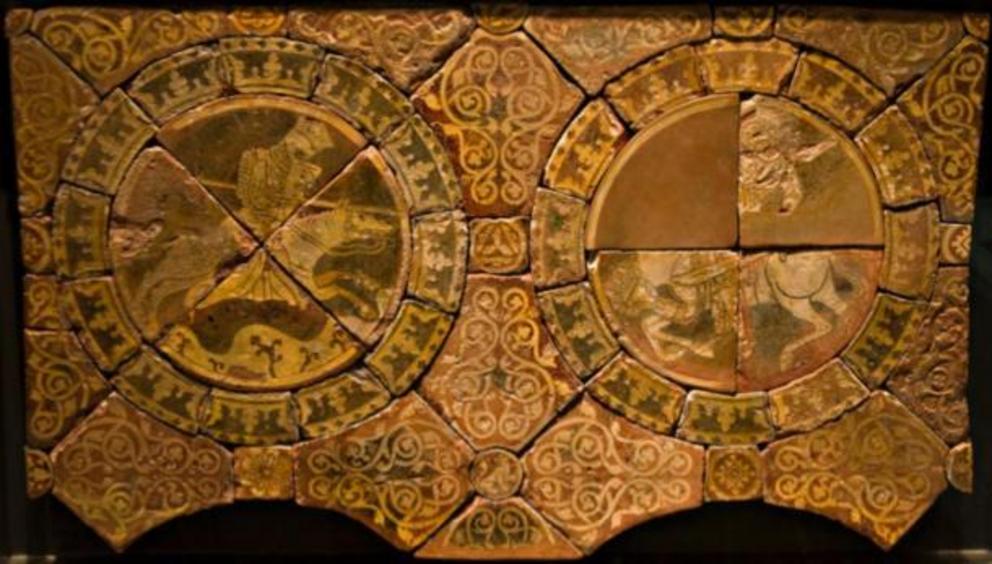 Tiles of Richard the Lionheart, left and Saladin, right.
Tiles of Richard the Lionheart, left and Saladin, right.
On the 9th of October 1192, Richard left the Holy Land never to return. Although the Third Crusade made significant gains and ensured the survival of the crusader states, ultimately, it did not achieve its primary objective, i.e. the recapture of Jerusalem. As for Richard, the expedition won him fame and sealed his reputation as a great military leader.
At the same time, however, the English king had made many powerful enemies during his time in the Holy Land and these were waiting to get back at him in Europe. In fact, Richard’s departure was mainly due to Philip’s attacks on the king’s French territories. Philip had left the Holy Land shortly after the Siege of Acre and had plotted with John to take advantage of Richard’s absence to increase their power.
Richard sailed home via the Adriatic, due to the French hostility. Unfortunately for the king, his ship was caught in a storm and was driven ashore near Venice. As a consequence, Richard was forced to make his way by back using the land route through Central Europe. Another enemy Richard had made during the Third Crusade was Leopold V, the Duke of Austria.
Therefore, the king disguised himself during the journey but was captured in Vienna in December 1192. His was first imprisoned by Leopold and then handed over to the Holy Roman Emperor.
Richard was worried that he would be handed over to Philip and eventually agreed to the harsh terms set by Henry for his release. The ransom to be paid was a huge sum of 150,000 marks, which was raised by increasing the taxes levied on his subjects.
In February 1194, Richard was released and immediately returned to England to be crowned a second time. The king was worried that the independence of his kingship had been compromised during his time in captivity.
Less than a month later, he left for Normandy, which had fallen to Philip, so as to reclaim this territory. In the next five years, Richard was at war with Philip and never once returned to England.
Richard died on the 6th of April 1199, while laying siege to the castle of Chalus-Chabrol. According to one story, there was a rumor that some treasure was found on the land of the Vicomte of Limoges, the owner of the castle. Richard demanded that the treasure be handed over to him. As the vicomte refused to comply, Richard attacked him.
 Inverted coat of arms of Richard the Lionheart, indicating his death, from a manuscript of Chronica Majora.
Inverted coat of arms of Richard the Lionheart, indicating his death, from a manuscript of Chronica Majora.
An alternate story is that Richard attacked the vicomte simply because he was an ally of Philip. Whatever the truth of the matter, on the evening of the 26th of March, Richard was shot in the arm by a crossbow bolt. Although the bolt was removed, the wound became infected, and caused Richard’s death.
Lastly, Richard’s body was buried in the abbey church of Fontevraud, in Anjou. Richard’s father, Henry, was also buried here. When Richard’s mother died in 1204, she would also be buried in the abbey church. Richard’s heart was buried separately, in Rouen Cathedral. In 2013, it was reported that Richard’s embalmed heart was analyzed by forensic experts.
Although the heart was already reduced to a brown powder, experts made some interesting discoveries. The results disproved a theory that Richard was poisoned and provides some insight into the materials that were used during the embalming process including frankincense, myrtle, daisy, and mint.
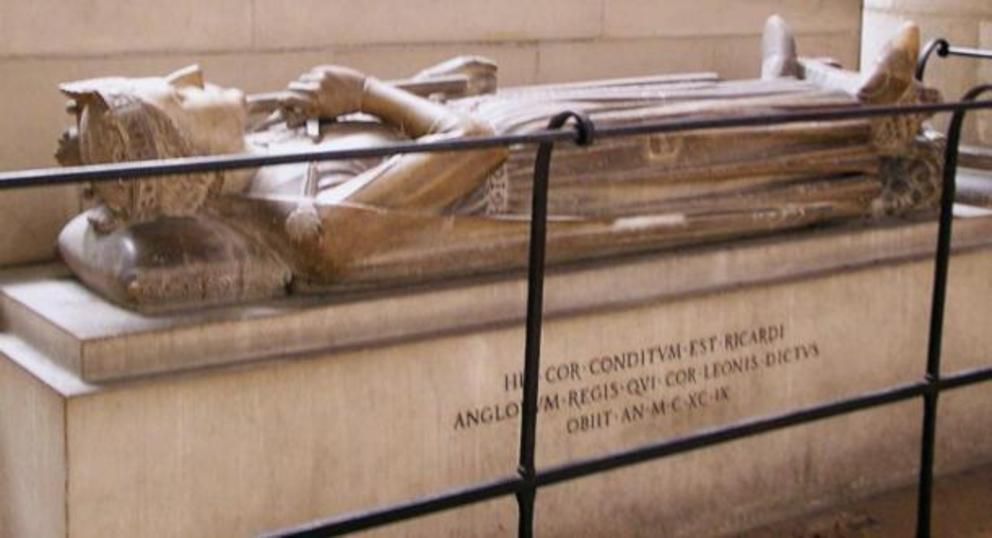 Tomb containing the heart of Richard the Lionheart at Rouen Cathedral.
Tomb containing the heart of Richard the Lionheart at Rouen Cathedral.

